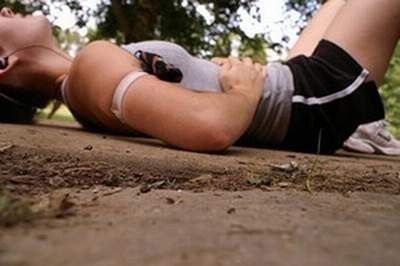What's in this article?
Heat Cramps Definition
Heat cramps are painful, brief muscle cramps. Muscles may spasm or jerk involuntarily. Heat cramps can occur during exercise or work in a hot environment or begin a few hours later.
Heat cramps usually involve muscles that are fatigued by heavy work, such as calves, thighs, and shoulders.
- You are most at risk if you are doing work or activities in a hot environment usually during the first few days of an activity you’re not used to.
- You are also at risk if you sweat a great deal during exercise and drink large amounts of water or other fluids that lack salt.
Heat Cramps Signs and Symptoms
Muscle spasms are the only sign of heat cramps. Symptoms of heat cramps are cramps that are:
- Painful
- Involuntary
- Brief
- Intermittent (they come and go)
- Usually self-limited (they resolve on their own)
Heat Cramps Causes
While it was thought that dehydration and electrolyte imbalance was the cause of muscle cramping, there are alternative theories as to why muscles cramp when the body is exposed to heat.
Since heat cramps begin after significant exercise in a hot environment where the affected individual begins sweating profusely, the theory was that muscles were depleted of water and sodium affecting their ability to contract and relax. Some new research suggests that as the muscles tire from excess activity and work, the ability for the muscle to regulate its own contraction is lost and this is called altered neuromuscular control. Regardless of the cause, the diagnosis and treatment for heat cramps remain the same.
Heat Cramps First aid
Heat cramps are painful, involuntary muscle spasms that usually occur during heavy exercise in hot environments. The spasms may be more intense and more prolonged than are typical nighttime leg cramps. Fluid and electrolyte loss often contribute to heat cramps.
Muscles most often affected include those of your calves, arms, abdominal wall and back, although heat cramps may involve any muscle group involved in exercise.
If you suspect heat cramps
- Rest briefly and cool down
- Drink clear juice or an electrolyte-containing sports drink
- Practice gentle, range-of-motion stretching and gentle massage of the affected muscle group
- Don’t resume strenuous activity for several hours or longer after heat cramps go away
- Call your doctor if your cramps don’t go away within one hour or so
Heat Cramps Treatment
- Remove child from practice or game and into the shade
- Have the child sip or drink fluids with electrolytes (sports drinks) continually until symptoms stop.
- Avoid “sloshy” feeling or excessive drinking of fluids
- Good rule of thumb: continue sipping after cramps stop until the child has the urge to urinate
- Gently massage the affected muscles
- Massage the affected muscles with ice bags (if possible, and if tolerated by the child)
- Gently stretch the affected muscles
- Add salt to foods (not by giving salt tablets)
- If symptoms persist and the child cannot tolerate fluids by mouth, bring the child to a hospital or doctor’s office (no need to call an ambulance)
Heat Cramps Prevention
If you work in a hot environment, you may experience heat cramps during the first few days on the job. Once you get used to the environment, and make sure you have adequate fluid replacement, you are less likely to have problems.





